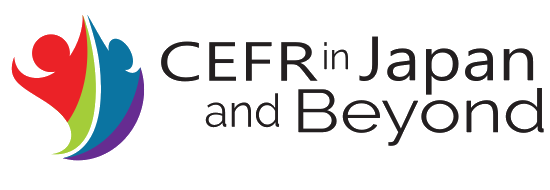Language Portfolio
The CEFR & ELP?
Common European Framework of Reference for Languages (CEFR)
In the early 1990’s a group of European language course providers worked together to find solutions to the following well-known problem: how can we communicate and how can we understand what kind and what degree of language knowledge is certified through a particular examination result, diploma, or certificate? On the one hand they were looking for an answer in a common reference system, on the other hand looking for ways that examinations, diplomas, and so on could be described transparently. The results of a Council of Europe symposium were that an extensive, coherent, and transparent reference grid to describe communicative language competences was to be developed. This reference grid eventually became the CEFR which since its publication in 2001 has taken the world of language testing by storm.
There are six levels: A1- and A2-Basic User;B1- and B2-Independent User; C1- and C2-Proficient User in relation to five skills: listening, reading, spoken interaction, spoken production, and writing (see following page). The CEFR provides us with a detailed scheme for describing language use. These common reference levels can be used as a starting point for the elaboration of language syllabi and curriculum guidelines and the design of assessment.
The use of the CEFR continues to spread. Syllabus designers, course book publishers, and language test providers worldwide (including the Cambridge ESOL and TOEIC and TOEFL tests within Europe) seek to align their exams to the CEFR for reasons of transparency and coherence. The government of Hong Kong has adopted the CEFR for language assessment and the whole education policy of New Zealand has been redeveloped and renamed in a way that closely follows the structure of the CEFR itself.The Osaka University of Foreign Studies, with support from the Ministry of Education, uses the CEFR for curriculum design and assessment on a class and language department level for all 25 languages studied there. The Ministry of Education is currently studying the CEFR and its application. A printable version of the CEFR is available at:
*** <Link will be replaced soon>
It can also be downloaded below (this is copyright of the Council of Europe).
The European Language Portfolio?
The European Language Portfolio (ELP) was conceived along with the Common European Framework of Reference for Languages (CEFR) in 1991. Pilot projects followed from 1998 to 2000; by 2008 ninety seven ELPs had been validated from twenty six Council of Europe (COE) members and 4 International nongovernmental organizations. The European Confederation of Language Centres in Higher Education (CERCLES) ELP designed for use in university language education is used in some 250 language centres from 21 European countries.
The guiding principles of the ELP include: it is the property of the learner; it values competence in a positive way; it promotes learning inside and outside the classroom; it takes a lifelong perspective on learning of languages; and it is based on the CEFR. The FLP SIG has developed a bilingual (English/Japanese) language portfolio"Language Portfolio for Japanese University" , based on the CercleS ELP mentioned above, and teachers manual.
**See the "Language Portfolio for Japanese University" tab below for more details of this Language Portfolio**
The principal aim of the LP is to motivate students to take responsibility for their own learning by facilitating self-evaluation and the setting of clear language learning goals. The LP allows teachers and learners to plan for, reflect on and record progress in learning activities.
The LP consists of 3 parts:
1. The Language Passport: The main goal of the Language Passport is to help students assess their competencies in the language(s) being learned as well as the growth in these competencies. Learners may also record learning and intercultural experiences here.
2. The Language Biography: The Language Biography is used to set learning targets and regularly assess progress in order to develop the learner’s sense of responsibility for the learning process.
3. The Dossier: This is used to keeps samples of work so as to show evidence of language learning competencies and progress to the learner, teacher and others.
In the language passport learners periodically summarises their proficiency using the self-assessment grid (CEFR). Each skill is further broken into checklists of can do statements or tasks for each level and skill (see Figure 1 for an example). These checklists of can do statements can be used when the first-time user is unsure of their level during self-assessment and later to identify learning targets, select learning activities and materials, monitor learning progress, and evaluate learning outcomes (formative self-assessment)
As noted at the JALT 2008 forum the SIGs’ focus should be wide and include other frameworks (e.g. Canadian Language Benchmarks) also. We will try to focus on these in upcoming newsletters and activities.
Subpages (1): Language Portfolio for Japanese University
CEFR_english.doc (38k)Framework & Language Portfolio SIG, 13 Nov 2009, 00:45
v.1ď

